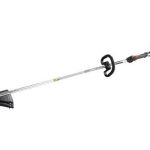It may sound kind of icky, but you may want to consider raising worms to help enhance the health of your garden. The little critters can eat up to 75% of their body weight a day and produce valuable fertilizer for your garden.

Soil life like earthworms are essential because they help convert organic matter and soil minerals into vitamins, hormones, disease-suppressing compounds and nutrients that are paramount for plants to grow.
(Courtesy: Wicstun_tomo at flickr.com)
Items you will need to create a worm bin include:
· A plastic bin with a lid
· Newspapers
· Water
· Peat Moss or Grass Clippings
· Live Composting Worms
Select plastic bins with holes that permit ventilation and supply drainage for excess water. Place the newspapers in the bottom of the bin to keep solids from washing away. Also include some shredded newspaper for bedding. Soak in water, then drain off the excess. Add the peat moss or grass clippings.
Next, you will need to purchase the live composting worms to populate the bin. Do a search on the Internet for online sources from where you can purchase the critters using the keywords “live composting worms.”
Once populated, the bin can be placed inside or outside. The important thing to keep in mind, however, as you decide on a good location for the bin is to keep it out of the rain and sun, offer good air circulation, and make certain that it can’t freeze.
Once the bin has been set up leave it alone for a couple of days, then start feeding the worms a varied diet that includes half a pound of vegetable scraps per pound of worms every day. The crawly critters also like crunched up eggshells and used coffee grounds. If there is a period during which you don’t have any kitchen scraps to feed the worms, substitute with fresh grass clippings.
Don’t let the soil dry out. You need to keep it very moist, but well drained. Keep in mind that an earthworm is more than 75% water and breathes through its skin. So if you allow the soil to dry, the worms will die. However, proper drainage is essential because if the worm tunnels fill up with water, the poor little critters can drown.
Gardeners who have the experience of maintaining a worm bin have been known to have a spray bottle of water close by so they can launch a couple of squirts when some water is needed.
Do not feed your worms citrus, onions, meat, dairy products, or fats.
After several weeks you will start to notice a very dark crumbly substance in the soil of the bin. This is worm manure also known as worm castings.
Take a good amount of soil from the bin and dump it into a pile, then shine a light on it. The worms will scatter to get away from the light. Scrape off the top of the pile and expose the next layer to the light and keep on repeating until you have a wormless pile.
Mix the castings into the garden and put a little on the houseplants. You can also put the castings into a watering bucket, pour water over it and then water the plants with the solution.
You can use this fertilizer fresh and moist or let it dry. It is also suggested that you mix it with your potting mix and use it to give seedling or potted plants a great start.
Keep in mind that this fertilizer is highly concentrated. A little goes a long way.






